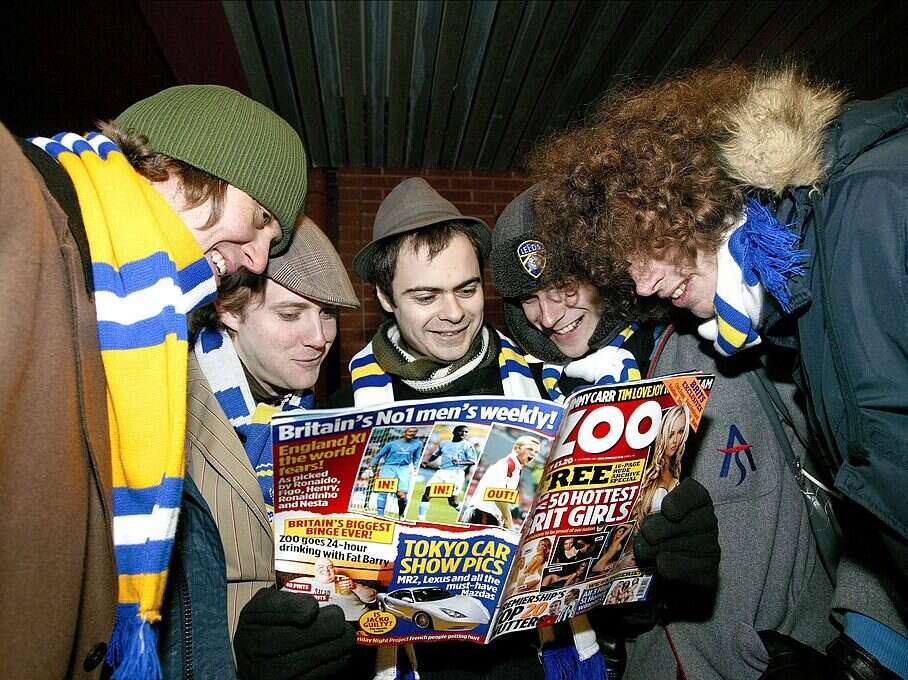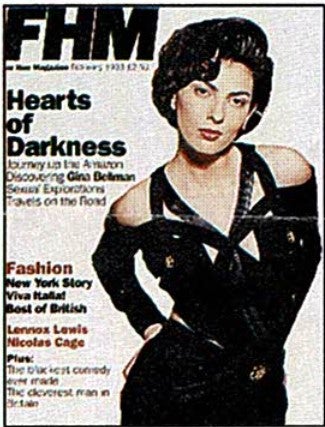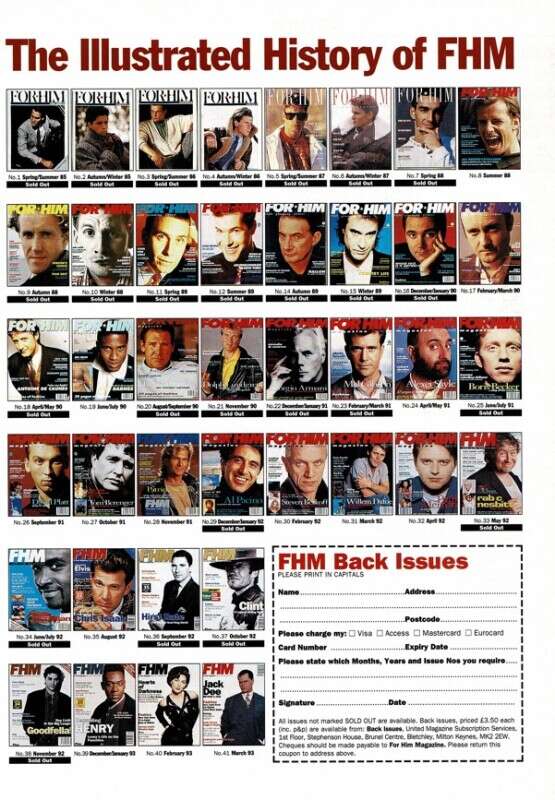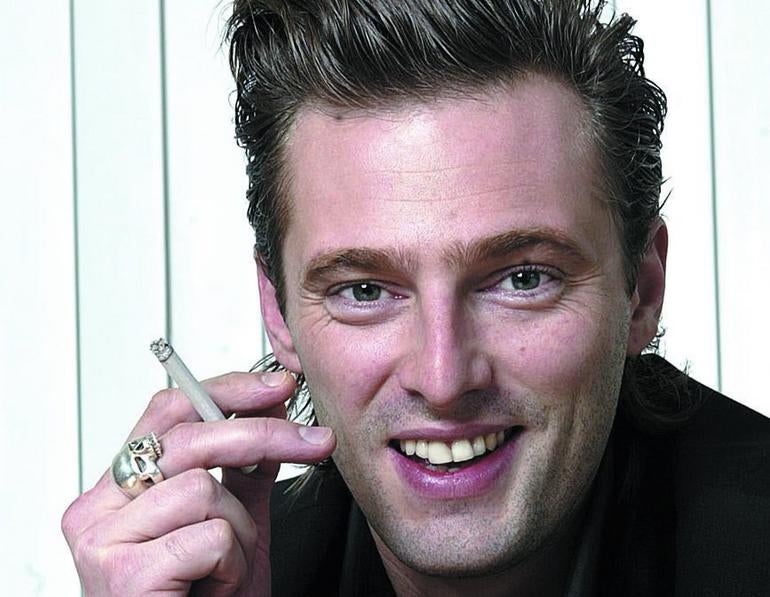
Despite growing up as a teenager in the mid-noughties, the ‘lads’ mag era’ passed me by. Possibly I was a little too young for the industry’s late 1990s peak. Possibly I wasn’t a lad. Possibly it was because I lived in the middle of nowhere and couldn’t have made it to the newsagents without a parent.
But, since becoming a journalist ten years ago, lads’ mags have fascinated me. I only ever bought one – a 2013 edition of Loaded from WHSmith in Waterloo station – and that was because I was travelling to an industrial estate somewhere in Surrey to interview the magazine’s then-owner, Paul Baxendale-Walker, a self-proclaimed “porn baron”. (I claimed the £3.99 cover price back on expenses.)
On the train, I remember cringing as an elderly lady sat opposite me while I was leafing through a magazine that had a nude photograph of “Kate Middleton’s lady lovin’ cousin” on its cover. How, I wondered, could anyone bear to buy and be seen in public with a magazine like this?
The answer soon turned out to be: they couldn’t. Within a couple of years lads’ monthlies Loaded and FHM, and weeklies Zoo and Nuts, had all closed – the lads’ mag era was over.
So why write about lads’ mags now?
The pitch-meeting answer is twofold: first, this month marks 30 years since FHM first published a photograph of a woman on its cover. And second, FHM is back. Sort of. (More on this below.)
The honest answer is that I’m still fascinated by the lads’ mags era. How were these magazines ever seen as socially acceptable? Have they been replaced? (The nude photos, of course, have been – but what about the gonzo journalism that I’ve heard about? The stunts? The men’s lifestyle features?) Is there a void in the market? Could they ever come back?
The Gina Bellman cover
First, to address the journalistic hook: yes, by complete and happy coincidence for the relevance of this article, it is 30 years since actress Gina Bellman graced the front cover of FHM (below). She was the first of very many women to do so. In 1994 it was Naomi Campbell and shortly afterwards the lads’ mag boom was in full swing.
It turned out Bellman’s place in the history of FHM was news to her. “I don’t think it’s a crown I’ve ever thought twice about,” she told me on the phone after I first contacted her via Twitter. Looking at the front of FHM’s February 1993 issue, she described it as a “weird cover” and noted that she was wearing a “bondage-style dress”.
The cover was titled “Hearts of Darkness” and it promised readers a “journey up the Amazon” with Bellman. “I’ve no idea what ‘journey up the Amazon’ refers to,” said Bellman, who did not keep a copy of the magazine. “I’ve never been to the Amazon! It’s so bonkers. It was just a load of nonsense at the time.”

She added: “It came about the way most things came about. You’re promoting something and you get a phone call from a PR: ‘Would you like to do a magazine cover?’ You never really discussed it, you just got a call saying you’ve been offered a cover, and then you just showed up.
“I don’t think anything’s really changed very much. You could give a hundred interviews talking about being a tomboy in jeans and T-shirts, and you’d pitch up and there’d still be a bondage dress and a bunch of lingerie on a rail.” She added that women’s magazine features operated in the same way.
Francis Cottam, FHM’s editor in 1993, was also hazy on the details of this front page. He misremembered that the Bellman cover had gone out in 1992.
James Brown, the founding editor of Loaded, seemed annoyed when I told him I was planning to write a feature on lads’ mags hooked on the Bellman cover. He described the 1993 version of FHM, which had recently rebranded from For Him Magazine, as a “crap pseudo tailoring business mag”.
“It’s 28 years since my first Loaded came out,” Brown messaged. “Anyone suggesting [FHM] had a part to play, or writing such, in the men’s mag boom of the mid-90s will be either rewriting history or look embarrassingly inaccurate.” He also pointed out that many of Loaded’s original covers did not feature women.
Later, when I approached Brown again for a call, he responded: “Haha no chance William. You seriously thought For Him had something to do with when I started the first mass-market men’s mag.” Brown suggested I may have been too young to understand and told me there were many more “contemporary stories” that I could be writing. I thought he had a point so I decided to stop bothering him.
I didn’t intend to upset Brown and do believe his claim that his Loaded started the lads’ mag boom. But FHM certainly appears to have played some role as well.
From For Him to FHM
For Him Magazine was founded in 1985 as a biannual periodical that covered high-end men’s fashion. For Him’s founding editor, Eric Musgrave, a former fashion trade journalist, described it as the “first of the current crop of men’s style magazines”, preceding Arena (1986), British GQ (1988) and Esquire (1991).
For Him was initially distributed in upmarket menswear stores and Musgrave recalled that its publisher, Chris Astridge’s Tayvale, struggled to find a place for it in newsagents. “We would go to places like WHSmith or John Menzies and say: ‘We’ve got this magazine, it’s just a general interest magazine for men with a slant on fashion.’ But there was nowhere for them to put it… The men’s style sector was completely unknown in 1985.”
Musgrave left the magazine in the late 1980s but briefly returned in 1990. He recalled running a four-page feature on a model called Eleanor Davies, a rarity for the magazine then, at the behest of its owner. Musgrave left shortly afterwards because “I preferred trade magazines to consumer magazines”.
Musgrave provided me with a scan (below) of the first 41 covers of For Him, which rebranded as FHM in 1992. The covers demonstrate the title’s shift away from high-end fashion. From 1990 onwards, cover stars included John Barnes, Mel Gibson, Boris Becker, Paul Merton, Lenny Henry and Jack Dee, as well as Bellman.

How Loaded ‘outbloked’ and changed men’s mags
Musgrave’s later successor Cottam, who pushed for the magazine’s rebrand to FHM. He told me he felt “For Him” sounded “twee”.
Under Cottam’s leadership, the title started to expand its coverage further beyond fashion. In competition with GQ, Arena and Esquire (which itself had launched in 1991 with a cover featuring a woman, Brigitte Bardot, but does not appear to have done so again until 1994), FHM became more of a general interest men’s lifestyle magazine.
“Sport was extremely important,” said Cottam. “Back in those days, we were making the sector up as we went along. It was tremendously exhilarating to work in. The phrase that everybody kept using at the time was: setting the agenda.
“But then Loaded came along. And Loaded was just the lowest possible common denominator. You know, putting traffic cones on your head, objectifying women to the degree that I don’t think had ever been seen in mainstream publications before.
“And I kept getting told by both my deputy editor and my contributors: we’re being outbloked. And if we want to compete in terms of circulation with Loaded, we have to do what they’re doing. And I really didn’t want to do that. I didn’t want to be a poor man’s GQ or Esquire.
“I just wanted to be something different from what Loaded was attempting. But what FHM did after my departure was copy Loaded very, very successfully, and in fact, exceeded their circulation.”
In May 1994, shortly after the launch of Loaded, which effectively defined the lads’ mags market, Emap acquired FHM from Chris Astridge’s Tayvale for £1m. Cottam resigned shortly afterwards.
He recalled that the June 1994 issue featured a topless photograph of Naomi Campbell using her arms to cover her breasts. “I think as a publisher you would have been insane to ignore the implications of what that cover represented, the fact that this was the direction in which loads of uncommitted or first-time readers wished the title to go in” he said. “The Holy Grail of circulation in that sector at that point was 100,000. And it became obvious that in order to achieve that you could not put John Barnes on the cover. It had to be a sexy woman with as few clothes on as possible.”
After Campbell, Cottam said, the magazine began to feature more photographs of minor television personalities. “The idea was: you’re never going to get a date with Naomi Campbell. However, you might get a date with this weathergirl. It was equally ludicrous – you wouldn’t. But that was the kind of mentality that they were working on.”
Gail Porter and peak lad mag
Gail Porter, the television presenter, was featured on what is arguably the most iconic cover of the lad mag era. In 1999 FHM projected Porter's naked cover photograph onto the Houses of Parliament.
"I got a phone call saying: Would you like to do this magazine?'" she recalled. "And I remember speaking to my gran and she went: 'That would be fun!' And I was like, yeah, wouldn't it? They basically said we're doing you a favour and we'd like to put you into our magazine. And I thought, well, what could possibly go wrong? Yeah, everything."
Porter, then 28, attended the photoshoot with her mother, was not paid, and said she did not expect the magazine to use fully-nude photographs of her, let alone project them onto the Houses of Parliament. The BBC's online article from the day was headlined "Porter lights up London" and reported that this was part of her "quest for stardom".
Afterwards, said Porter, "I shut myself away. I was not happy with what happened. But I'd done other ones – I did photoshoots with GQ – and I didn’t think it was bad at the time. And now I just think they were not honest with me.”
Porter said she “felt vulnerable, to be honest. Because everyone had seen me naked. And I thought, right, okay, I did the photoshoot, so I knew what I was doing. But I didn’t know it was going to escalate to what it escalated to.
"So I spent most of my time afterwards defending myself and talking to people and talking on chatshows, saying: ‘I didn’t do know about this.’ Obviously, I knew about the picture, but I didn’t know what they were going to do. I just felt a bit rubbish.”
Porter, whose career and finances later crumbled, added: “I’ve now got a 20-year-old daughter and it took me a long time to even explain to my daughter what happened. She eventually saw the picture and she was like: ‘Oh my God, mum!’ I apologised, and that’s all I can do. And she’s okay, she’s fine with it.”
The end
Martin Daubney, FHM's features editor from 1997–99 and later the long-standing editor of Loaded, said he had few regrets about the lads' mags boom. "I look back on that era, I think like millions of readers, with a huge sense of fondness," he said.

When I asked him about his proudest achievements, Daubney recalled how Loaded had flown journalists to Chernobyl to shoot "radioactive wolves". “We hired a helicopter, we got hold of a sniper rifle, we shot wolves,” he said.
"This was the sort of mad stuff. This mad, gonzo journalism. We were leading this lifestyle of the outrageous. We just didn’t give a fuck. The readers loved that. We just didn’t care. And they were vicariously living a rock ‘n’ roll lifestyle through us.”
Daubney, who served as an MEP for the Brexit Party from 2019 to 2020 and now works as a host on GB News, described this period as a time “when being politically incorrect was not only celebrated, but it was very, very mainstream”.
When I asked Daubney what his two children made of his lads’ mag past, he said: “When I talk about what I used to do, they’re fascinated. They think it's great. And there’s no point trying to hide it because they can go and Google it.”
Lads' mag circulations faded dramatically through the 2000s. In the 2010s retailers, under pressure from campaign groups including Lose The Lads' Mags, started to demand that publishers tone down their front pages or cover them up. Already some had moved lads' mags on to their top shelves. "That was the beginning of the end," said Daubney.
Behind the scenes, said Daubney, he and other lads' mags journalists had pushed for more modest covers. But, he said, the businesses running the magazines refused, citing "market forces". He recalled how a Sacha Baron Cohen cover had "tanked" and said consumer surveys regularly found that readers wanted attractive women on covers.
"There was one guy who put it in a phrase that kind of chilled us to the core. He just said: 'I want more birds and less words.' And we were like: ‘Oh, fuck.’ Because all of us got into it because we really liked all the gonzo journalism. We were really into the writing and really being out there and outrageous.
"But when it boiled down into less features and more pictures of scantily-clad women – when you go down that route it’s a law of diminishing returns. You weren’t allowed to be porn mags because we were always terrified of going on the top shelf or inside a bag.
"And then of course what happened is we saw the ingress of protest culture, the very early days of cancel culture, specifically targeted at men’s magazines.”
Loaded, after changing hands between several owners and latterly adopting a "zero nipple" policy, was closed in March 2015. Nuts had already gone, while the closures of Zoo and FHM followed in November 2015.
Do lads' mags have a future?
To my shame, it was only towards the end of my research into lads' mags that I realised FHM is back in publication. Sort of.
According to its website, FHM now has editions in the UK, US, Australia, Canada and France, all with covers featuring scantily-clad women. These magazines, owned by a South African media company, appear to have been launched with little fanfare in 2019 and 2020.
Their covers feature images of mostly little-known models. For example, this month's FHM Canada features an image of Bri Sands, a Las Vegas-based "FHM and Playboy model" with fewer than 6,000 Instagram followers. The accompanying unbylined interview includes questions like: "Any exciting projects lined up this year?" and "Best place you have ever been to in the world?" I emailed the publisher and Sands for comment but have not yet heard back from them.
The new FHM aside, is there a gap in the market?
Cottam seemed uncomfortable with the lads' mag era that followed his editorship of FHM in the early 1990s. But he did feel a hole had been left in the men's magazine sector.
"I think there is a loss there," he said. "Particularly in the early nineties... there was a lot of navel-gazing going on among men: Who are we? What's our role? Have we been superseded by women? Do we still have a valid place in society and all the rest of it? How ambitious should I be in terms of materialism and that sort of think?
"I think there's a vacuum now," he added. "How much of an appetite there is for those sorts of discussions, I don't know."
On the surface, the digital brand Ladbible might seem a natural successor. "But if you look at Ladbible now it's completely and utterly woke," Daubney bemoaned.
Daubney said there had been chatter about the possibility of a new lads’ mag launch for the modern era. But would the lad of 2023 pay for, or even read, such a magazine? “I don't think young men would be receptive to it," said Daubney.
If even Daubney thinks these titles have had their day, it's difficult not to conclude that the lads' mags era will likely go down as a curious, and relatively brief, blip in the history of magazine publishing.
Email pged@pressgazette.co.uk to point out mistakes, provide story tips or send in a letter for publication on our "Letters Page" blog
